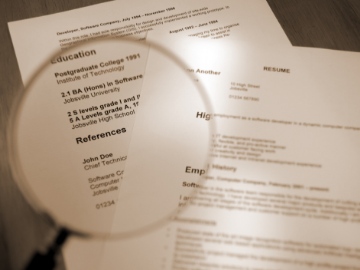Job Application: Understanding the Resume Process

Job hunting can be a challenging task. First-time job searchers may have a hard time finding their way around the job application process. But having a good resume can make it easier. It's even better when you get to know the resume process. Understanding this can help prepare you to make a strong resume.
With the right resume, you increase your chances of getting a job interview and maybe even landing a job.
Preparing Your Resume
Preparing a resume helps you better match the job you're applying for. In every job application, your resume goes through a process you must be aware of. Depending on how you want to write your resume, you should highlight your skills and experiences. But remember to make it short to one page and easy to read. Tailor it to the job you're vying for and keep your audience in mind.
The Resume Process
As a job hunter, you must create a resume that makes the cut. But to do that, you also need to understand how recruiters screen resumes. The following steps make up the resume process.
-
Pass the applicant tracking system (ATS)
During the resume process, job applications go through an intelligent filter called the applicant tracking system (ATS). This software makes it easier for recruiters to find the best people for the job. It's also in charge of matching job seekers with job openings. That's why it's important to tailor your resume to a specific job you're applying for.
The ATS picks out resumes that only match what the company is looking for. If you make it through this filter, you automatically get a shot with the recruiter.
-
Make a good impression within the 6-second window
Once your resume makes its way to the recruiter, you only have a few seconds to shine. Recruiters usually look at a resume for six to seven seconds. It's a quick screen test that will either end your resume's journey or lead it to the next step. Awareness of this part of the resume process makes you realize that you need the right words in your paper.
-
Ace the test
The first few seconds is your initial test with the recruiter. If you impressed them within that timeframe, they would look closer at your resume to see what else is there. Again, this is where a short but precise resume does its work. The longer the recruiter looks at your resume, the better your chances of passing the test. An additional ten to fifteen seconds will tell if you make it through the next step.
-
Get shortlisted
As your resume makes its way into the job application process, you get closer to the person who can give you an interview. The recruiter hands over your resume to the next person in charge. If the recruiter likes what he sees, you'll get shortlisted.
-
Reviewed by the hiring manager
The hiring manager is the next person that your resume needs to impress. Hiring managers are the ones who take a better look to analyze resumes. They also decide if you'll get an interview. In this part of the job application process, your resume must speak up for you. A well-tailored resume highlights the skills and experiences that match the job you're going for.
-
Get an interview
In the final step, the hiring manager makes the call. If you pass, you may get an interview. When you land a job interview, your resume has done its part. Remember that an interview doesn't secure a job yet; you still need to ace that interview to complete the job application process.
Wrapping up the Job Application Process
Trying to land a job isn't always a breeze. But when you understand the processes of job hunting and applying, you become better at it. A great resume will also pave the way for you to get your desired job. Check out Career.com to give you a boost in your job search today.


